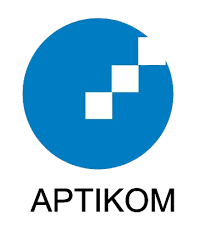Android-based Dental Anatomy Learning Application Using Mayer’s Multimedia Learning Principles
DOI:
https://doi.org/10.18196/eist.1210Keywords:
Dental Anatomy, Educational ApplicationAbstract
Anatomy learning methods are still dominated by using books, in which the material is presented in pictures and writings. The anatomy learning method using books is carried out by redrawing parts and memorizing the location and its terms. Thus, students have difficulties when they forget and want to find terms on the anatomy because it is uneasy and takes a long time. This research aims to create a system to study anatomy, especially dental anatomy, through an android-based application, and provide ease of anatomy of tooth learning using Mayer’s principle of multimedia learning on application. Based on system testing and user testing results, this application can be used as a medium of information and learning about tooth anatomy. It is evidenced by black-box testing and questionnaire results.
References
E. Sloane, “Anatomi dan Fisiologi Untuk Pemula [Anatomy and Physiology for Beginners],” Penerbit Buku Kedokt. EGC Jkt., 2004.
R. E. Mayer, “Multimedia learning,” in Psychology of learning and motivation, vol. 41, Elsevier, 2002, pp. 85–139.
T. Purwanti, “Aplikasi pembelajaran sistem peredaran darah manusia berbasis augmented reality android [Learning application for human circulatory system based on android augmented reality],” 2015.
S. H. M. Ali, “Program Bantu Pengenalan Anatomi Tubuh Manusia Dengan Metode Window Clipping Berbasis Android (Studi Kasus Tulang Manusia) [Human Body Anatomy Recognition Program With Android-Based Window Clipping Method (Human Bone Case Study)],” 2017.
H. O. L. Wijaya, “Aplikasi Mobile Learning Anatomi Tubuh Manusia Berbasis Android Studi Kasus (Sekolah Dasar Negeri 58 Kota Lubuklinggau) [Mobile Learning Application of Human Body Anatomy Based on Android Case Studies (58 Public Elementary Schools in Lubuklinggau City)],” J. Teknol. Inf. Mura, Vol. 7, No. 1, 2015.
A. I. Satria, L. Andrawina, And H. D. Anggana, “Perancangan Sistem Informasi Manajemen Pemesanan Tiket Pesawat Pada Travel Agent Wiro Karya Berbasis Web Dengan Metode Waterfall [Design Of Management Information System For Aircraft Ticket Ordering On Web-Based Travel Agent Wiro With Waterfall Method],” p. 10, 2020.
M. Mawardi, “Rambu-rambu Penyusunan Skala Sikap Model Likert untuk Mengukur Sikap Siswa [Signs for Developing a Likert Model Attitude Scale to Measure Student Attitudes],” Sch. J. Pendidik. Dan Kebud., vol. 9, no. 3, pp. 292–304, 2019.
R. Pressman, “Software Engineering: a practitioner’s approach McGraw-Hill, new York, 68,” 2010.
T. Hidayat and M. Muttaqin, “Pengujian Sistem Informasi Pendaftaran dan Pembayaran Wisuda Online menggunakan Black Box Testing dengan Metode Equivalence Partitioning dan Boundary Value Analysis [Testing of Online Graduation Registration and Payment Information Systems using Black Box Testing with Equivalence Partitioning Methods and Boundary Value Analysis],” vol. 6, p. 5, 2018.
P. Dr, “Sugiyono, Metode Penelitian Kuantitatif Kualitatif dan R&D [Sugiyono, Qualitative and Quantitative Research Methods and R & D],” 2008.
Y. Cheon and C. Chavez, “Creating Flutter Apps from Native Android Apps,” p. 10.



